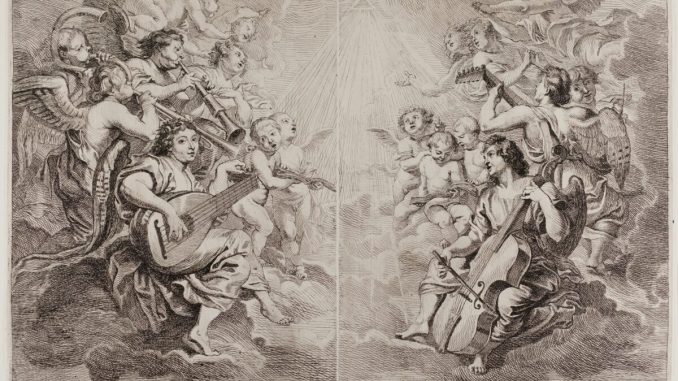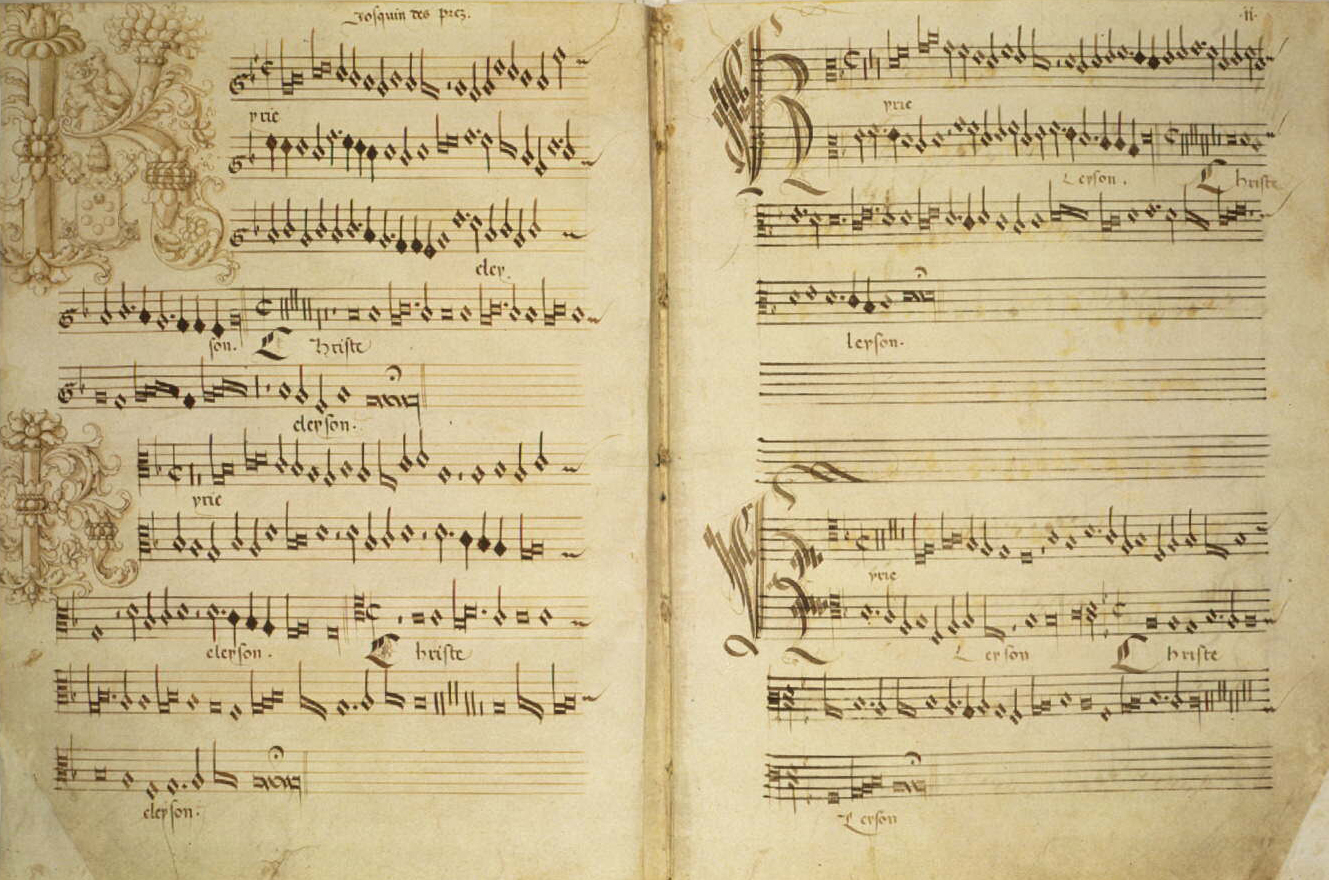
Music calls out to us, evoking an array of feelings, and at its best, it renews a sense of aliveness and hope within us. A masterfully crafted musical composition renews our spirits and gives us access to parts of ourselves that otherwise remained dormant.
Unless deeply steeped in the sounds of classical music of old, many of us have not likely come across the historical Franco-Flemish composer whose music quietly resonates through time, influencing our present-day melodies. During the 16th century, Josquin des Prez acquired the reputation of being one of the greatest composers in all of Europe. He earned widespread admiration for his magnificent musical technique and exalted compositions. Though the transitions of the succeeding eras diverted awareness away from this master composer, with more modern techniques evolving to claim the public’s attention, Josquin’s musical imprint remains.
Josquin was likely born circa 1450, in Burgundian Hainaut, now the border of present-day France and Belgium. He gained a reputation by writing heartening motets (usually religious music written for a church choral using Latin text, sung by multiple overlapping voices), masses (prayers sung primarily for the purposes of taking communion at church), and chansons (songs written for multiple voices, often accompanied by instruments). These musical styles arose from the Medieval period and evolved during Josquin’s lifetime.
Scholars speculate that Josquin spent much of his early musical career singing in choirs. Of the sparse records that exist, the first credible evidence of his involvement in a choir comes from the early 1470s, in association with the cathedral in Cambrai, France, where he was likely a singer. Further research places Josquin in Italy from around 1489 to 1495, while he was a part of the papal choir for Pope Innocent VII, and later for Pope Alexander VI. Josquin likely sang in the Sistine Chapel at some point during his career as well, where he may have composed one of his most famous works Missa Ave maris stella. During the Vatican’s 1997 restoration of the Sistine Chapel’s exclusive choir loft, Josquin’s name was discovered, carved just a foot above the singer’s bench. This graffito of Josquin’s name remains on the wall of the Sistine Chapel — an important record of time.

Hailing from the Franco-Flemish School, also known as the Franco-Netherlandish school, Josquin developed his musical talents amongst notable peers such as Jean de Ockeghem, Antoine Busnois, and Giovanni Pierluigi da Palestrina. This school of music held great importance in the European music scene from around 1440 to 1550. During this time, compositional freedoms increased, and music expanded in textural variety. As a result, composers were in high demand, spending many years living abroad, amongst courts in France, Italy, and Germany.
Josquin’s style of composition evolved out of the previous Medieval age’s monodic, single-lined music, as heard in most Gregorian chants of the time, and into the polyphonic musical style for which he became known. Many diverse styles exist using these musical forms. Historians believe polyphony began before the Medieval period, though no written records exist before this time. In early documentation, polyphony was called Organum and involved two or more voices singing simultaneously at contrasting pitches. Phrases were repeated emphatically, with overlapping notes arranged in such a way, often with aims to inspire devotion to divinity and beauty.
Before polyphony gained widespread use in sacred music, musicians wrote pieces comprising of single melodic lines called monophony. This musical texture existed most commonly amongst Byzantine and Gregorian chants, characterized by its simplicity. It was the most played music style of the Catholic Church, remaining a key musical form from the 4th century until the Middle Ages. However, rigid rules in harmonizing and rhythm suppressed composers. Eventually, composers broke through the excessive restrictions, leading to the Arts Nova period of the 14th century, a time when music began to blossom, eventually opening the way for Josquin to reach the heights of polyphonic music.
Martin Luther, a highly distinguished Augustinian monk from the Renaissance era, praised Josquin’s talents stating, “Josquin is a master of the notes, which must express what he desires; on the other hand, other choral composers must do what the notes dictate.” Josquin gained such vast admiration that many compositions by other musicians got attributed to him for the mere fact of increasing sales. At least 374 pieces were discovered to be incorrectly linked to him.
Bringing an additional challenge to scholars who work hard to correct any misattributions, Josquin turned to various stylistic routes when solving compositional puzzles. As a result, some of his pieces carry an uncanny simplicity, while others ring out with remarkable dexterity.
Speculation also exists around Josquin’s fame. Many scholars theorize over why Josquin gained more notoriety than his equally distinguished peers. This question steers the discussion towards the historical timing of the printing press. Near the end of Josquin’s career, technological developments of the printing press allowed him to become a published composer. Thanks to the Italian printer, Ottaviano dei Petrucci, Josquin could share his notes with a much larger audience of musicians. By 1536, Petrucci had already printed at least 61 music publications containing masses, motets, and chansons.
For a musician so highly respected, Josquin remains wrapped in mystery, behind the cloak of time. Yet, while much remains unknown about him, the power of his music remains with us. The details about his legacy continue to be a topic of debate amongst music scholars; however, many of his important compositions endure the test of time and are available for us to hear and still be moved by.
The life of Josquin’s music continues to breathe through the hearts and wills of contemporary vocalists and musicians who perpetuate his beautiful sounds. You might find a moment one day when you feel called towards stillness, to seek a beautiful scene to sit and gaze over, or perhaps settle into an open seat on a subway. Then, you might find a song of Josquin’s to play in your speakers or headphones. Perhaps the music Ave Maria or Missa “Gaudeamus”: Gloria — and see how the meeting of beautiful harmonizing voices can seep into your view, filling all that moves around you with even more life, inspiration, and beauty.
In 1567, the Florentine diplomat, mathematician, and humanist, Cosimo Bartoli, said in an encomium 46 years after Josquin’s death:
“Josquin may be said to have been, in music, a prodigy of nature, as our Michelangelo has been in architecture, painting, and sculpture; for, as there has not thus far been anybody who in his compositions approaches Josquin, so Michelangelo, among all those who have been active in the arts, is still alone and without peer.”
Sarah Hodges is a freelance writer currently based in Honolulu, Hawaii. Before becoming a writer, she studied fine arts at the Pennsylvania Academy of Fine Arts, The Grand Central Atelier in New York, and The Florence Academy of Art in Florence, Italy. Her inspiration for classical art first came from her grandfather, who is a contemporary realist painter in Hawaii.





Be the first to comment